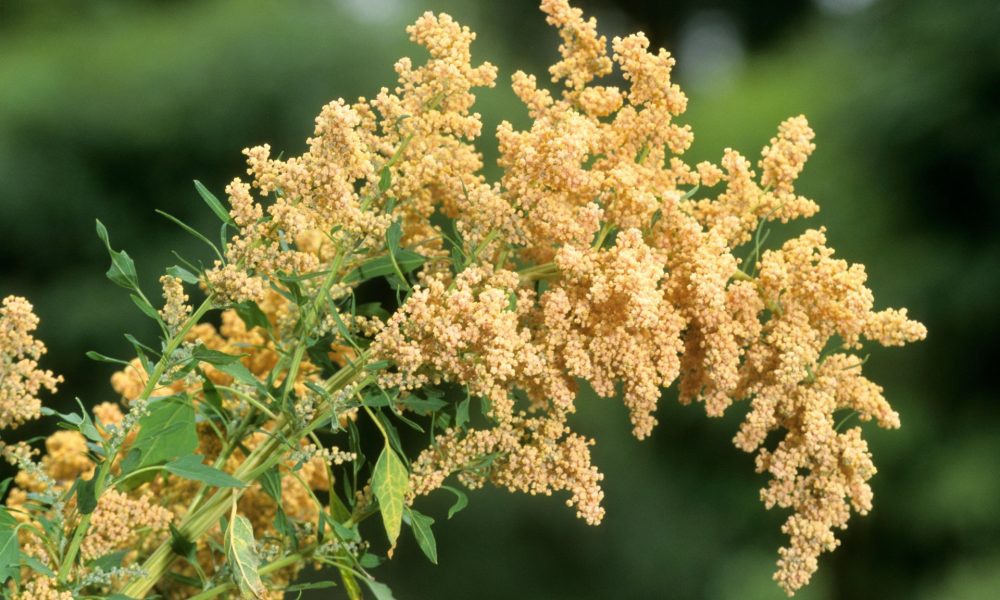
Photograph: Alamy
Ringed by inhospitable desert and assailed by fierce temperatures for much of the year, Dubai isn’t the most natural of settings for bold farming experiments. What little grows here is largely cultivated in air-conditioned greenhouses. So depleted is the local aquifer that it’s forecast to run completely dry within the next half-century.
But if the scientists and agronomists at the International Center for Biosaline Agriculture (ICBA) get it right, the Gulf’s glitzy commercial hub may soon be responsible for one of the most significant regional food innovations in recent memory.
As the Middle East’s groundwater stores have ebbed, and the mercury has soared, staple crops such as wheat, barley and rice have suffered in the increasingly hostile conditions. Desperate to maintain agricultural yields at a time when populations are also booming, some experts have come to wonder: might quinoa, the hardy, much-vaunted “super food” of the Andes, offer a solution?
“It can deal with high salinity, very little water and is seen as a climate change-resistant crop,” said ICBA’s Kameswara Nanduri Rao at his organisation’s neatly landscaped centre, which sits amid the semi-arid scrubland on Dubai’s outskirts. “Because of all these problems, people are looking at it as the crop of the future.”
Quinoa and the mostly low-lying terrain of the UAE make strange bedfellows. But several years of encouraging test trials – many conducted on two Emirati farms abandoned due to high groundwater salinity – have softened scepticism and boosted hopes that quinoa can be successfully adapted to local soils.
Early results suggest that certain quinoa varieties can yield up to four to five tonnes a hectare, as opposed to the usual two to three tonnes a hectare produced by most regional wheat farmers.
At a time of mounting obesity in parts of the region, the grain’s higher protein content is seen as a healthy boon. And with 500 litres of water needed to produce 1kg of quinoa, it’s much less of a drain on scarce aquifer stocks than rice, which requires about 2,500 litres a kilo, or maize, which needs 1,200 litres. “Here you see the biggest comparative advantage,” said Abdullah al-Dakheel, who is also working on quinoa at ICBA.
But some are questioning the wisdom of introducing quinoa into the region instead of increasing wheat yields and improving agricultural practices.
The UN’s Food and Agricultural Organisation (FAO), which is working to introduce quinoa across the Middle East and north Africa, has been accused of pushing new crops without regard for local preferences or customs.
There is also concern for the livelihoods of people living in the Andes, whose staple crop has experienced dramatic price fluctuations as its international popularity has grown.
“It stands to reason that if you introduce production of a particular grain or food into a country where formerly it was not grown it will mean market competition for the traditional growers of that crop and a subsequent drop in the prices they receive,” said Lynne Chatterton, author of Sustainable Dryland Farming.
Peruvian and Bolivian farmers are feeling the effects of the falling market price.
ICBA and FAO representatives acknowledge that plenty remains to be done before quinoa can be promoted in the Middle East. In the UAE, Rao and Dakheel say they’re still working on maintaining quinoa’s nutritional content, which has fallen when grown in highly saline soils.
For the most part, however, they remain bullish about quinoa’s prospects at a time when other crops aren’t keeping pace with environmental changes and climatologists are forecasting that parts of the Middle East will be uninhabitable by 2050.
“We have plenty of land that’s not being used optimally for agriculture and, given the market price and the increasing demand, we think this can succeed,” said Marie-Louise Hayek, a project coordinator at FAO Lebanon.
“Thirty crops provide 99% of the world’s food needs. Just rice, wheat, maize and potatoes provide over 60%. We need to diversify our food supply in this region and elsewhere. We need to make ourselves less vulnerable if something happened,” said Hayek.
Beyond laboratories, quinoa is little known in the Middle East; fewer still know how to grow it. But “if it works for the farmers, then I’m sure it will work for us”, says Mariam Saadek, as she bought a week’s worth of vegetables at a market in central Cairo. “We’re open to change.”

